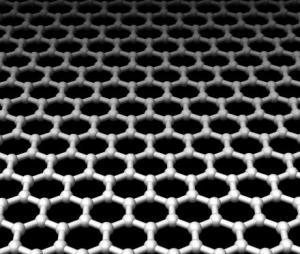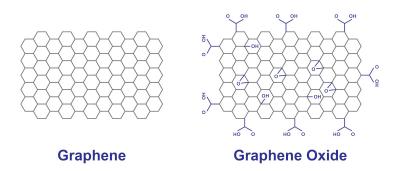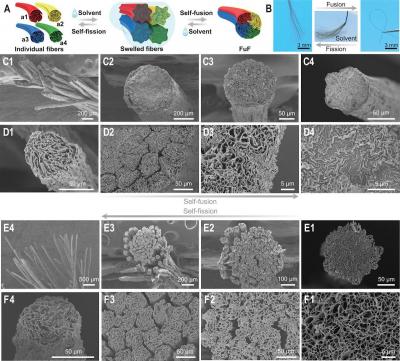
Here is the technical dope on graphene oxide and we also get the application to vacciners at the end.
It is all in public view and obviously never tested or understood. The original outbreak of COV 19 was a lilkely response to the roll out of flu vaccine a couple of months earlier. Then of course they turned on the 5G network which stimulated concentrations in the body. I still do not think it was meant to happen then and there.
Extending it world wide was certainly meant to happen.
Graphene Oxide: Introduction and Market News
Article last updated on: Apr 05, 2021
What is graphene?
https://www.graphene-info.com/graphene-oxide
Graphene is a material made of carbon atoms that are bonded together in a repeating pattern of hexagons. Graphene is so thin that it is considered two dimensional. Graphene's flat honeycomb pattern gives it many extraordinary characteristics, such as being the strongest material in the world, as well as one of the lightest, most conductive and transparent. Graphene has endless potential applications, in almost every industry (like electronics, medicine, aviation and much more).
The single layers of carbon atoms provide the basis for many other materials. Graphite, like the substance found in pencil lead, is formed by stacked graphene. Carbon nanotubes are made of rolled graphene and are used in many emerging applications from sports gear to biomedicine.
What is graphene oxide?
As graphene is expensive and relatively hard to produce, great efforts are made to find effective yet inexpensive ways to make and use graphene derivatives or related materials. Graphene oxide (GO) is one of those materials - it is a single-atomic layered material, made by the powerful oxidation of graphite, which is cheap and abundant. Graphene oxide is an oxidized form of graphene, laced with oxygen-containing groups. It is considered easy to process since it is dispersible in water (and other solvents), and it can even be used to make graphene. Graphene oxide is not a good conductor, but processes exist to augment its properties. It is commonly sold in powder form, dispersed, or as a coating on substrates.

Graphene oxide is synthesized using four basic methods: Staudenmaier, Hofmann, Brodie and Hummers. Many variations of these methods exist, with improvements constantly being explored to achieve better results and cheaper processes. The effectiveness of an oxidation process is often evaluated by the carbon/oxygen ratios of the graphene oxide.
Graphene oxide uses
Graphene Oxide films can be deposited on essentially any substrate, and later converted into a conductor. This is why GO is especially fit for use in the production of transparent conductive films, like the ones used for flexible electronics, solar cells, chemical sensors and more. GO is even studied as a tin-oxide (ITO) replacement in batteries and touch screens.
Graphene Oxide has a high surface area, and so it can be fit for use as electrode material for batteries, capacitors and solar cells. Graphene Oxide is cheaper and easier to manufacture than graphene, and so may enter mass production and use sooner.
GO can easily be mixed with different polymers and other materials, and enhance properties of composite materials like tensile strength, elasticity, conductivity and more. In solid form, Graphene Oxide flakes attach one to another to form thin and stable flat structures that can be folded, wrinkled, and stretched. Such Graphene Oxide structures can be used for applications like hydrogen storage, ion conductors and nanofiltration membranes.
Graphene oxide is fluorescent, which makes it especially appropriate for various medical applications. bio-sensing and disease detection, drug-carriers and antibacterial materials are just some of the possibilities GO holds for the biomedical field.
Buy Graphene Oxide
Graphene oxide is relatively affordable and easy to find, with many companies that sell it. It does, however, get confusing since different companies offer products that vary in quality, price, form and more - making the choice of a specific product challenging. If you are interested in buying GO, contact Graphene-Info for advisement on the right GO for your exact needs!
The latest graphene oxide news:
SPAC, an Italy-based medium-sized company specializing in the production of technical textiles, has joined the Graphene Flagship's Spearhead Project G+BOARD that aims to build parts of cars’ passenger compartments with graphene and related materials.
G+BOARD’s researchers aim to remove most of the copper wiring currently used in dashboards, to reduce the car’s weight and production steps, while improving aesthetics, disposal and recyclability. SPAC is developing new steering wheels and glove boxes with graphene-based materials.
Read the full story Posted: Jun 16, 2021
In 2018, Sunrise Energy Metals (SRL) and Ionic Industries partnered up and established a JV called NematiQ to develop graphene oxide (GO) membranes for water treatment applications. SRL initially had a 75% stake in the joint venture, before increasing its interest to 83.2% in 2020. Now, SRL announced its plan to take full ownership of NematiQ.
NematiQ has developed a process for manufacturing GO, which can be applied to a membrane support to create a graphene oxide-based nanofiltration membrane (GO-Membrane). The GO-Membrane manufacturing process has reportedly already been demonstrated on commercial-scale industrial equipment.
Researchers from Zhejiang University, Xi'an Jiaotong University and Monash University have developed a way to bind multiple strands of graphene oxide together, creating a process that could prove useful in manufacturing complex architectures.

Reversible fusion and fission of GO fibers. Credit: Science
In recent years, materials scientists have been exploring the possibility of making products using total or partial self-assembly as a way to produce them faster or at less cost. In biological systems where two materials self-assemble into a third material, scientists describe this as a fusion process. Accordingly, when a single material spontaneously separates into two or more other materials, they refer to it as a fission process. In this new work, the researchers have developed a technique for creating graphene-oxide-based yarn that exploits both processes.
Read the full story Posted: May 09, 2021
Researchers at Georgia State University and Emory University have developed an intranasal influenza vaccine using recombinant hemagglutinin (HA), a protein found on the surface of influenza viruses, as the antigen component of the vaccine.
They also created a two-dimensional nanomaterial (polyethyleneimine-functionalized graphene oxide nanoparticles) and found that it displayed potent adjuvant (immunoenhancing) effects on influenza vaccines delivered intranasally.
Read the full story Posted: May 04, 2021
No comments:
Post a Comment